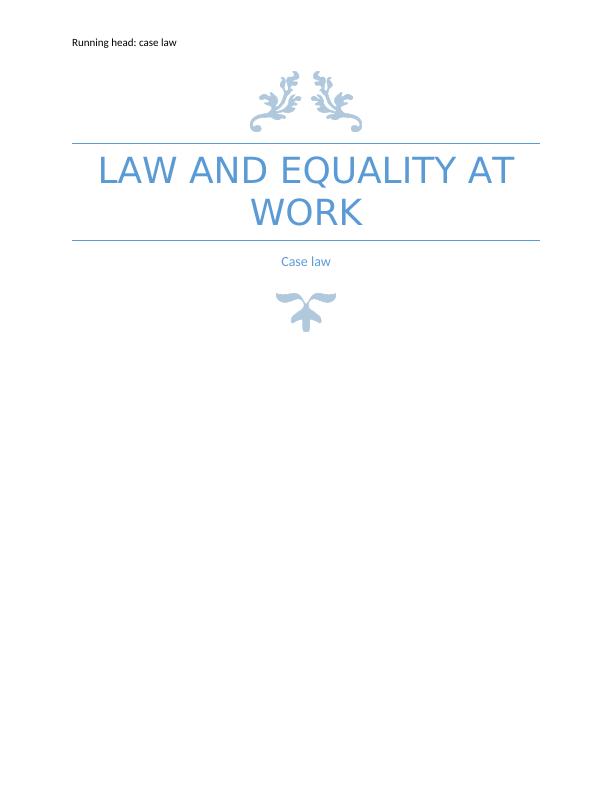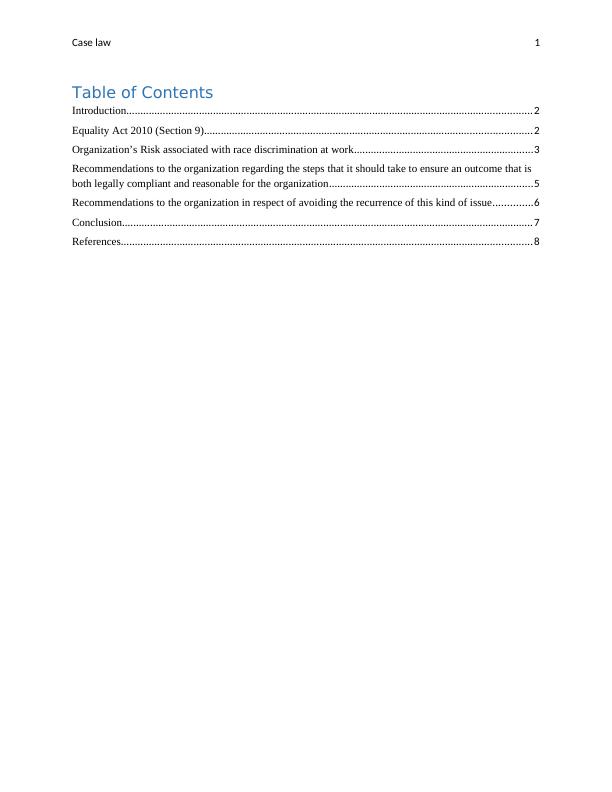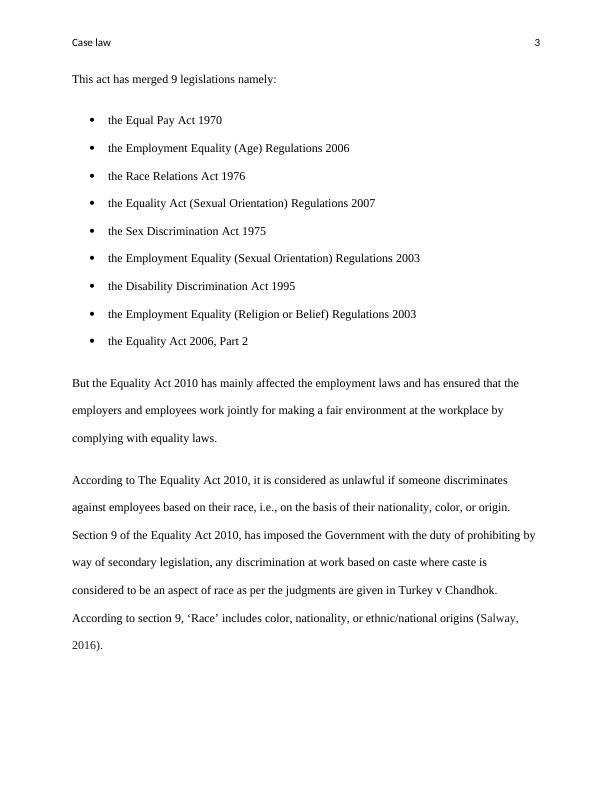Law and Equality at Work: Case Law
12 Pages1960 Words374 Views
Added on 2019-09-30
About This Document
This article discusses the Equality Act 2010 and its implications for race discrimination at work. It explains the risks associated with discrimination and the penalties that can be awarded. It provides recommendations for employers to ensure legal compliance and avoid recurrence of discrimination. The article also includes a case law example of institutionalized racism and the compensation awarded for racial discrimination and unfair dismissal.
Law and Equality at Work: Case Law
Added on 2019-09-30
ShareRelated Documents
End of preview
Want to access all the pages? Upload your documents or become a member.
Case Study Of Law - Equality Act
|11
|1684
|360
Discrimination on the Basis of Gender Reassignment and Unfair Dismissal under UK Employment Law
|7
|2485
|484
Exploring Equality Act 2010 and Human Rights Legislation
|8
|2385
|30
A Critical Analysis on Employment Equality Law Concerning Discrimination on the Grounds of Religion in Ireland
|14
|4924
|33
Law, Society and Controversy
|9
|1695
|56
ASS071-1 Business And Corporation Law Discussion 2022
|10
|1810
|15




